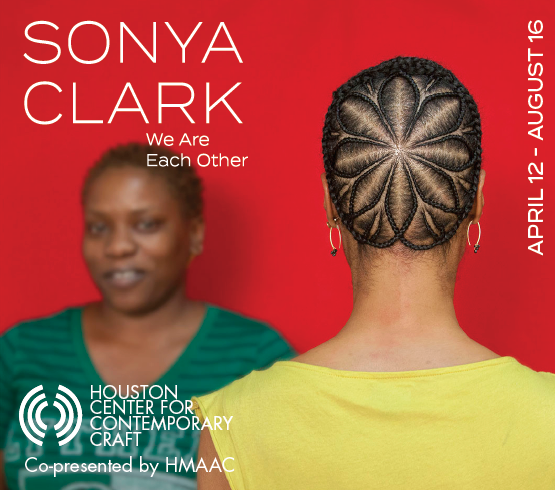Whether in concept or action, violence is something that every human has a relationship with. While it started as a sort of survival tool, the human capacity for aggression may now be seen as a defect. It’s an aspect of the human experience that has the potential to be deeply uncomfortable, and Jordan Strafer feels that as much as anyone.
In Trilogy, on view at the Contemporary Art Museum Houston through Nov. 26, 2023, Strafer provides a darkly humorous meditation on the human capacity for violence. Throughout the three videos on display in the exhibition, Strafer presents a mixture of both people in prosthetics and dolls that act as surrogates for both the victims and perpetrators.
“I think of the dolls and masks in my work as a projection surface to turn characters from individuals to archetypes so that something that could be hyper specific could be made more universal, and this idea that the microcosm extends to the idea of patriarchy in this trilogy, thinking about the nuclear family or the actual patriarch as a metonym for society,” Strafer stated.
“With the daddies in PEP, I wanted to make the narrative without a clear victim or villain,” Strafer explained. “I wanted the only tender moment to occur between the two men and have the Barbie/child character be more ambivalently relatable or not quite sympathetic.”
On a drive together, the daddies change the music in the car until they find something they can agree upon. Later in the video, the daddies begin to kiss each other tenderly. These small moments of intimacy jar the viewer amidst descriptions of assault as those Strafer’s avatar testifies before belittle her, “Are you a little girl?” repeated in increasingly distorted and aggressive voices.
The script pulls from myriad sources, including Strafer’s own life, Christine Blasey Ford’s testimony of assault in Supreme Court Nominee Brett Kavanaugh’s hearing in 2018, Anita Hill’s 1991 testimony against Clarence Thomas, Franz Kafka’s The Trial, psychological case studies by Sigmund Freud, psychotherapy training tapes from 1965, and Gwyneth Paltrow’s 1999 Academy Award acceptance speech.

1 ⁄9
Jordan Strafer; photo courtesy of the artist.

2 ⁄9
Jordan Strafer
PEAK HEAVEN LOVE FOREVER, 2022
Two-channel HD video: color and sound, 19 minutes Courtesy the artist

3 ⁄9
Jordan Strafer
PEAK HEAVEN LOVE FOREVER, 2022
Two-channel HD video: color and sound, 19 minutes Courtesy the artist

4 ⁄9
Jordan Strafer, PEP (Process Entanglement Procedure) (video still), 2019. Two-channel HD video, color and sound, 15 minutes. Courtesy the artist.

5 ⁄9
Jordan Strafer
SOS, 2021
HD video: color and sound, 11:08 minutes Courtesy the artist

6 ⁄9
Jordan Strafer
Pink Drawing 5 (L’Avventura), 2017 Graphite on onionskin paper Courtesy the artist

7 ⁄9
Jordan Strafer: Trilogy
July 28 - November 26, 2023
Nina and Michael Zilkha Gallery
installation image

8 ⁄9
Jordan Strafer: Trilogy
July 28 - November 26, 2023
Nina and Michael Zilkha Gallery
installation image

9 ⁄9
Jordan Strafer: Trilogy
July 28 - November 26, 2023
Nina and Michael Zilkha Gallery
installation image
Detachment, or perhaps dissociation, is a common theme throughout the exhibition as the violence grows more specific. In SOS, the second video of the series, a young woman faces verbal and physical abasement as she attempts to reach her father, who is being loaded into an ambulance. Again depicted with dolls and miniatures, the inhabitants of the world continue to suffer as disembodied limbs reach into the scene to caress and manipulate them.
“Thinking about dolls and having a memory of being a child and playing with dolls, kids act out such deep and not socially acceptable desires onto their dolls,” Strafer said. “Their play ranges from violent to nonviolent, and kids really act out everything with their dolls. There’s a freedom there when you have these surrogates, and I don’t know how I feel about the depiction of real violence, but there’s more freedom to go there when it’s not a real person.”
“The script of PEAK HEAVEN LOVE FOREVER is more straightforward with one narrative instead of a blend of sources,” Strafer explained.
The video is rooted in reality, depicting Strafer, her father, and her father’s husband on an air ambulance from London to Miami for her father to receive care. Over the course of the flight, the artist highlights how ridiculous the situation felt: eating sushi feet away from her comatose father as crystal glasses clink in the background. Elevating this and leaning into the absurdity, the cast breaks into song part way through the video.
Eventually, though, everyone on the plane turns into a life-sized doll version of themselves, with only Jordan and the father returning to their human forms. In a dissociative state, Jordan finds herself armed with a gun, firing at the dolls with only sound effects making it evident. Gunshots, shotgun blasts, and shell casings hitting the ground fill the room, save for when Jordan turns the gun on her father, taken out by a laser from DOOM, and then herself, silently.
The concept of a surrogate or avatar is nothing new. For years, people laid claims that exposure to violent video games, movies, and books, sources Strafer indeed pulls from, results in an increase in aggressive behavior. But violence extends beyond the physical, as Strafer shows in these videos.
“It’s partially a meditation on the line between consciousness and objecthood, and the characters in the story are always hovering over that line.”
—MICHAEL McFADDEN





